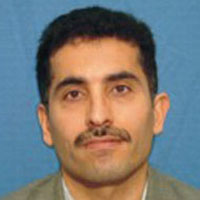Comparing performance of TMD and MTMD vertically distributed in height for multi-modal seismic control of tall buildings
In this study, to investigate and compare the performance of the single mass damper in the maximum modal displacement (roof) and multiple mass dampers vertically distributed in the height of the structure, based on the modal analysis, two linear and nonlinear models of a 40-story structure were selected. The structure has been modeled in OpenSees software using seven acceleration time histories. The analysis results for applied earthquakes under the maximum acceleration of 1.0g show that the control of the linear structure by multiple tuned mass dampers (MTMDs) tuned to the first and second modes have more appropriate behavior than others, and the average reduction of the maximum displacement of the Roof applying this type of dampers is 14.5%, which is about 2 times more than reduction of the STMD tuned to the first mode and the MTMDs tuned to the first or second modes, systems. However, due to the assumption of tuning the design parameters of the dampers corresponding to their elastic behavior, the performance of single and multiple mass dampers slightly decreases in a nonlinear model of the structure while structural responses are still controlled. Also, for the 10% error caused by misadjusting of the dampers, the behavior of MTMDs is more appropriate.
-
Control of seismic vibrations of a structure with nonlinear behavior using tuned mass and magnetorheological dampers with fuzzy logic algorithm based on velocity and displacement
Sasan Mostaghimi Tehrani, Akbar Bathaei, *
Journal of Vibration and Sound, -
Developing a New Weighted Relative Performance Index to Evaluate Base Isolation Systems in the Seismic Behavior of Structures
M. Bajalan, S.M. Zahrai *
Journal of Structure & Steel,



